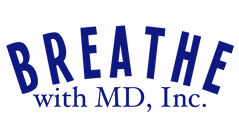|
Dear Andrea,
I was prescribed a CPAP, but I heard Muscular Dystrophy patients are supposed to use a BiPAP. What’s the difference? Sincerely, PAP Confused Dear PAP Confused, A CPAP has one continuous positive airway pressure. That means the same pressure blows when you inhale and exhale. BiPAP or a bi-level device is one that has two different positive airway pressures, one higher pressure for inhaling (IPAP) and a second, much more reduced pressure for exhaling against (EPAP). The difference between the two numbers is called SPAN. Experts say span should never be low for those of us with neuromuscular diseases (NMDs), so there should be a large difference between the two pressure values. Some respiratory clinicians believe the difference should be 10 or more. Others prefer to set the difference as 50%. And still other experts believe the EPAP value should be set to zero, which requires use of a ventilator and what’s called “active circuit” setup. In all of this respiratory jargon, it’s important to understand that as your respiratory condition changes with your muscle weakness, these PAP (positive airway pressure) values should change too. A clinician who specializes in the breathing issues of those with NMD will understand and be able to guide you to the device and settings best for your level of function. Only a bi-level device assists with ventilation, the process of moving air into and out of the lungs. This process can be difficult for those of us with NMDs, as our muscles between the ribs and diaphragm weaken over time. Exhaling against a pressure that is strong enough to fill our lungs can be uncomfortable and difficult. That’s why the lowered EPAP of a bi-level device makes it more comfortable for us than using the one pressure of CPAP. When the IPAP and EPAP of a bilevel device are at an appropriate level, breathing muscle rest can be achieved overnight. If you have weakened breathing muscles, CPAP use can be exhausting, preventing breathing muscle rest. Being prescribed a CPAP as opposed to a bi-level device is a common management error for breathing muscle weakness. You can find more common clinician mistakes compiled by Dr. John R. Bach’s team at https://www.breathenvs.com/most-common-mistakes in the section, “MOST COMMON MANAGEMENT MISTAKES.” Wishing you breathing muscle rest, Andrea Comments are closed.
|
AuthorAndrea is the Founder & President of Breathe with MD, Inc. and served as Ms. Wheelchair Tennessee 2017. Her blog posts are based on experience living with a Neuromuscular Disease. The blogs are not to be used as a substitute for medical care. Always seek medical advice and care from a licensed medical professional. Archives
June 2023
Categories |
Breathe with MD, Inc. is a U.S. registered 501(c)(3) nonprofit organization. Donations are tax deductible to the extent allowable by law.
Note: This website should not be used as a substitute for medical care. For medical care or advice, please seek the care of a clinician who specializes in the breathing issues of those with Neuromuscular Disease (NMD).
Web Hosting by Hostgator
Note: This website should not be used as a substitute for medical care. For medical care or advice, please seek the care of a clinician who specializes in the breathing issues of those with Neuromuscular Disease (NMD).
Web Hosting by Hostgator

 RSS Feed
RSS Feed